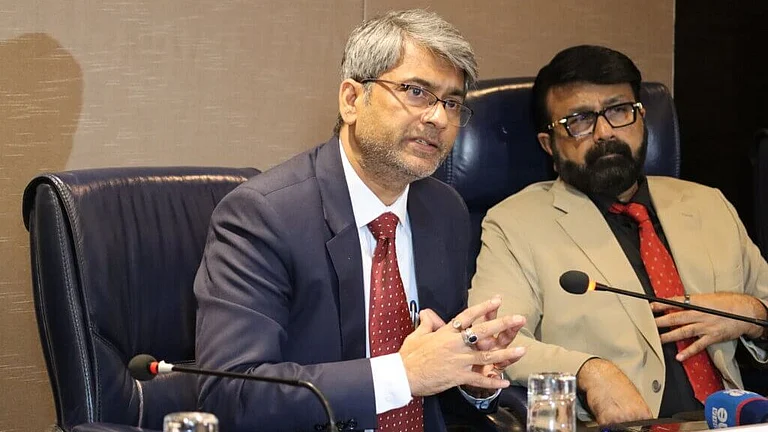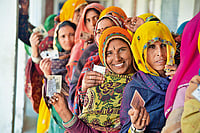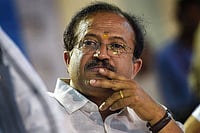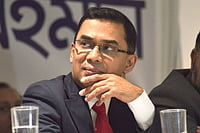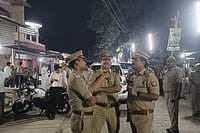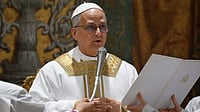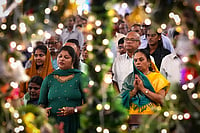But that image helps the writing, or at least the reading of it. Often you are not reading language and content, you are seeing what a knighted and Padmashreed Tully has to say. The book reads much better if you remind yourself page after page of the profile of the author. Or authors? It is officially co-authored by Gillian Wright. But it is a first-person story, the first person being Tully making occasional references to Gilly.
But not even Tully could pull off 302 pages on image alone. This book is unspectacular, but in its best bits it has a solidity. There is no arresting political insight on offer, but Tully has a gift for building what is often a telling picture with fairly ordinary observations. And the reporting does rise to writing now and then.
Bureaucracy and corruption are not easy subjects. They’re as obvious as dal and roti. What can an author tell us about this that Indians don’t know and others can’t guess? The danger about writing something most people think boring is that it can get boring to read. This is not a danger the book entirely escapes. But wander about with Tully within some of our national cliches and you might just end up rethinking India somewhat. Which would mean that in its flat way, the book has worked.
Not evenly, though. The start is particularly unpromising. A chapter from Ayodhya on The Reinvention of Rama is a clear announcement of distance from a perceived sympathy for the Hindutva club, which it now seems he found embarrassing. Tully takes the travelling way of telling a political story. "There are enough rhesus macaques with protruding red bottoms in Ayodhya to provide the recruits for several armies of Rama’s lieutenant Hanuman," he writes. In a chapter on carpet-weaving in Mirzapur, Tully takes note of a bus station unvisited by buses. And so much of the book goes. The observations are light; sometimes trite.
Another chapter tells the Tehelka story—as told to Tully—through an interview with reporter Mathew Samuel. A description of a people’s court in Rajasthan that shows corruption at the panchayat level follows later in the chapter. So, corruption from top to bottom, point made. There isn’t the beginning of anything new here, unless you consider Mathew’s remark that his camera was hanging by his penis. Or take the chapter on Kashmir. Pakistan had trained and equipped militants, but India’s mistakes multiplied the problem, Tully says. Really? The point is obvious, but what redeems the book in sections is that the texture is not. Tully succeeds often at the difficult task of bringing something new to what at least Indian readers believe they know.
The chapter on Cyberabad is vividly drawn in straight lines to paint a picture of a chief minister as a "hard, humourless man", not quite seen as a convincing IT revolutionary, and no more certain of success than Rajiv Gandhi. A man who also takes care not to talk IT at election rallies. Tully reports that Naidu rules "with a rod of iron" and that there is "considerable chafing under his harsh yoke". But the reforms are important because if they fail, "it will reinforce the belief that it’s inevitable India should be badly governed". Tully’s lack of inhibition in offering stock wisdom can be worrying.
It’s some of the later chapters that come to life. A Tale of Two Brothers is an outstanding story of Sant Bux Singh, V.P. Singh’s brother. A story really about the ways of the Congress and of king-making seen through Tully’s friendship with Sant Bux. This is the travelling way into political analysis, the chatting way into social insight. It’s an easy but chilling account of the failure of Sant Bux—because he was too straight and too honest.
Tully’s theological background and his journalistic observations come together remarkably in his chapter on Altered Altars, the story of Christianity in Goa which becomes, as our white-collar nationalists are so fond of saying, adapted to Indian conditions. And there are enough arresting thoughts in his story on Nizamuddin in Delhi where he lives, on the battle for the Muslim heart and mind between the Sufis at the dargah and the austere Tablighis at the Tablighi Markaz round the corner. It’s a serious and institutionalised rivalry over Muslim hearts and minds that goes a long way beyond Nizamuddin. But how many in Delhi know of this hugely significant and undeniably historic hearts-and-minds battle being fought out in Nizamuddin?
The virtue of the book, like the virtue of his journalistic career, is that he was there—and not because he brought to being there anything exceptional. Tully’s greatest triumph is that he is there in Saurashtra to tell the story of the water crisis, that he is there in Karnataka to tell the story of farmers killing themselves in wto-induced poverty. These are not stories you find often in newspapers. The book is less obvious than it deserves to be because too many of our newspaper editors have abandoned India for some Indian picnic.










